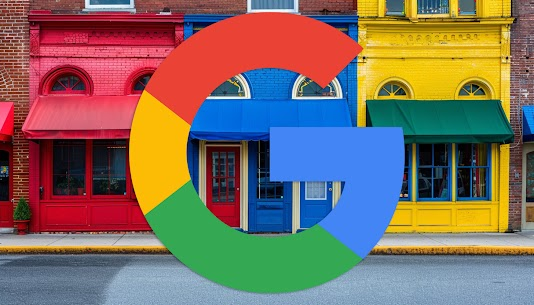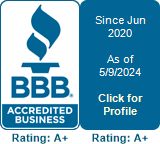5 Website Design Strategies to Outshine Your Competitors in Cumming, GA
By: Jesse Nelson
Ever wondered why some websites just seem to grab your attention and keep you clicking? It’s all in the design. In this digital age, a well-designed website that enhances the user experience is a game-changer. In Cumming, Georgia, where businesses are competing for local and regional attention, a website with a superior design and user experience can significantly differentiate a business from its competitors. In this blog post, we’ll explore five key website design strategies that will provide you with the tools you need to make your website a powerful asset for your business. So, let’s dive in and start building a website that truly stands out in Cumming.
1. Keep It Simple and Clean
A clean and simple design can enhance the readability of your website and make it easier for visitors to find the information they’re looking for. Avoid cluttering your website with unnecessary elements, and focus on presenting your content in a clear and concise manner. Here are more tips on how to achieve a clean and simple design:
- Use White Space: White space, also known as negative space, refers to the empty space between different elements on your page. It can help reduce clutter and increase readability.
- Limit Colors: Stick to a simple color palette. Too many colors can be distracting and make your website look unprofessional.
- Use Clear, Legible Fonts: Choose fonts that are easy to read and look good on all devices.
- Simplify Navigation: Make it easy for users to find what they’re looking for with a simple, intuitive navigation menu.
- Use High-Quality Images Sparingly: While images can enhance your website, too many can be distracting. Use high-quality images sparingly and only when they add value.
Remember, the goal of a website is not to showcase flashy design skills but to communicate information and persuade users to take action. A clean, simple design can help you achieve these goals effectively.
2. Ensure Fast Loading Speed
Website loading speed is a critical factor in both the user experience and SEO.
Impact on User Experience: Nowadays, users expect websites to load quickly. A slow-loading website can lead to user frustration, causing them to leave your site and potentially turn to a competitor. In fact, studies have shown that a delay of just a few seconds in page load time can significantly increase the bounce rate.
Impact on SEO: Search engines like Google consider website loading speed when ranking websites. A faster website can help improve your search engine rankings, making your site more visible to potential customers. Google has indicated that site speed is one of the signals used by its algorithm to rank pages. Here are some tips on how to improve your website's loading speed:
- Optimize Images: Large image files can significantly slow down your website. Use image editing tools to reduce the file size of your images without compromising on quality.
- Minify CSS, JavaScript, and HTML: Minifying your code involves removing unnecessary characters (like spaces and commas), which can help reduce the size of your CSS, JavaScript, and HTML files.
- Use Browser Caching: Browser caching involves storing parts of your website on the user’s browser so that they don’t need to be loaded again on subsequent visits.
- Reduce Redirects: Each time a page redirects to another page, your visitor faces additional waiting time for the HTTP request-response cycle to complete.
- Use a Content Delivery Network (CDN): A CDN involves storing copies of your website on servers around the world so that users can load your website from a server that’s geographically close to them.
A fast-loading website not only improves the user experience but also helps with SEO. It’s well worth the effort to improve your website’s loading speed.
3. Leverage SEO
Search Engine Optimization (SEO) plays a pivotal role in website design. It’s the practice of optimizing your website to make it more visible to search engines like Google. The higher your website ranks in search engine results, the more traffic it’s likely to receive. In a competitive market like Cumming, Georgia, effective SEO can give your business a significant edge.
SEO isn’t just about stuffing your website with keywords. It’s about creating a website that provides value to users and is easy for search engines to understand. Good SEO practices improve the user experience and usability of a website, making it more likely for users to stay, engage, and convert. Here are some SEO strategies that can help your business rank higher on search engines:
- Keyword Research: Identify the keywords that your target customers are using to search for your products or services. Use these keywords strategically in your website content.
- Quality Content: Create high-quality content that provides value to your users. This not only attracts users but also makes your website more relevant to search engines.
- Meta Tags: Use meta tags to provide search engines with information about your webpage. This includes meta titles, meta descriptions, and alt tags for images.
- Internal Linking: Use internal links to guide users to other relevant pages on your website. This helps search engines understand the structure of your website.
- Backlinks: Backlinks from reputable websites can boost your website’s credibility in the eyes of search engines.
- Mobile Optimization: A mobile-friendly website is crucial for SEO. Search engines favor websites that look and perform well on mobile devices.
- Website Speed: A fast-loading website not only improves user experience but also ranks better on search engines.
- Regular Updates: Regularly updating your website with fresh content can signal to search engines that your website is alive and offering up-to-date information.
SEO is a long-term strategy. It takes time to see results, but the payoff can be significant. With effective SEO, your website can attract more organic traffic, leading to more leads and sales for your business.
4. Incorporate Social Media
In today’s age, social media has become a powerful tool for businesses. It allows you to connect with your audience, build your brand, and drive traffic to your website. Integrating social media into your website design can amplify these benefits, creating a cohesive online presence that engages users and encourages them to interact with your brand. Here are some examples of effective social media integration:
- Social Media Icons: Include social media icons that link to your profiles. These are typically placed in the header or footer of your website.
- Share Buttons: Add share buttons to blog posts and other shareable content. This makes it easy for users to share your content on their own social media profiles.
- Social Feeds: Display feeds from your social media profiles directly on your website. This could be a Twitter feed showing your latest tweets, a Facebook feed showing recent posts, or an Instagram feed displaying your latest photos.
- Social Login: Allow users to sign up or log in using their social media accounts. This can simplify the login process and improve the user experience.
The goal of social media integration is not just to increase your follower count but also to enhance the user experience and foster a sense of community around your brand. It’s about creating a seamless and interactive experience for your users that bridges the gap between your website and your social media platforms.
5. Optimize for Mobile
With more people using their smartphones to browse the internet than ever before, mobile optimization is no longer a luxury—it’s a necessity. Mobile devices account for over half of all web traffic worldwide, and if your website isn’t optimized for mobile, you’re missing out on a significant portion of potential customers. Mobile optimization ensures that your website looks and functions great on all devices, including smartphones and tablets. It improves the user experience, as users can easily navigate your website and find what they need. It also boosts your SEO, as mentioned earlier, because search engines like Google prioritize mobile-friendly websites in their search results. Here are some tips for effective mobile optimization:
- Responsive Design: Implement a responsive design that automatically adjusts to fit the screen size of the device a visitor is using.
- Touch-Friendly Elements: Make sure all buttons, links, and forms on your website are large enough and spaced well apart to be easily tapped on a touchscreen.
- Fast Load Times: Mobile users are often on the go, so they expect websites to load quickly. Compress your images and streamline your code to improve load times.
- Simplify Your Design: A cluttered website can be difficult to navigate on a small screen. Keep your design simple and clean.
- Avoid Flash: Many mobile devices don’t support Flash. Use HTML5 or JavaScript instead for any special effects.
- Test Your Site: Regularly test your website on different devices and browsers to ensure it’s truly mobile-friendly.
By optimizing your website for mobile, you can reach more customers, provide a better user experience, and improve your search engine ranking. It’s a win-win-win situation!
Conclusion
Implementing these five website design strategies can help your business in Cumming, Georgia, stand out from the competition. That said, creating a great website requires careful planning, creativity, and technical expertise. If you need assistance in bringing these strategies to life, feel free to
contact us at Simpleman Digital Marketing. As
website design experts in Cumming, our team is committed to helping local businesses like yours shine online. Let’s create something amazing together!





